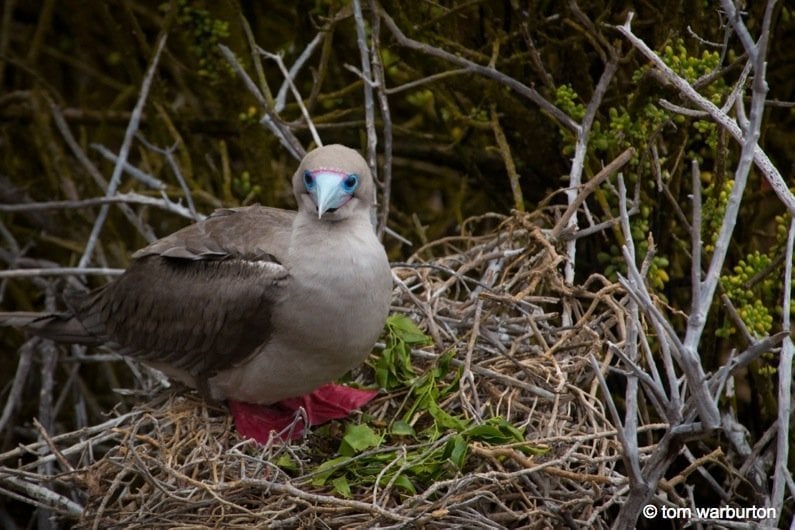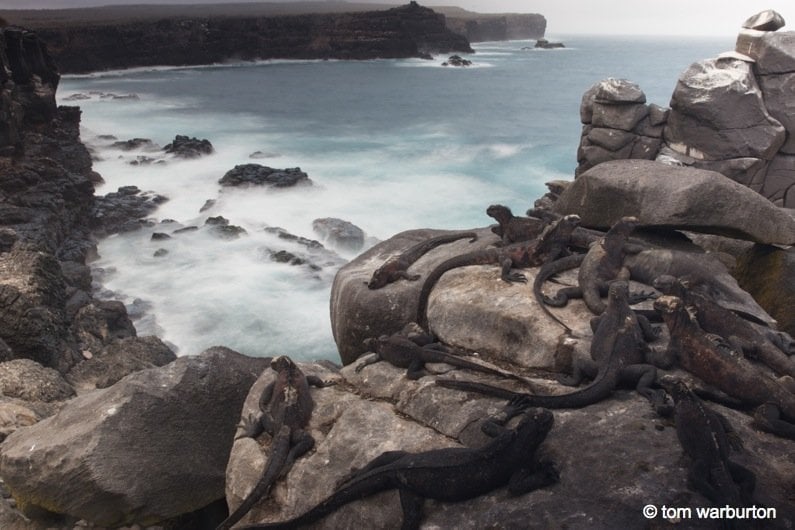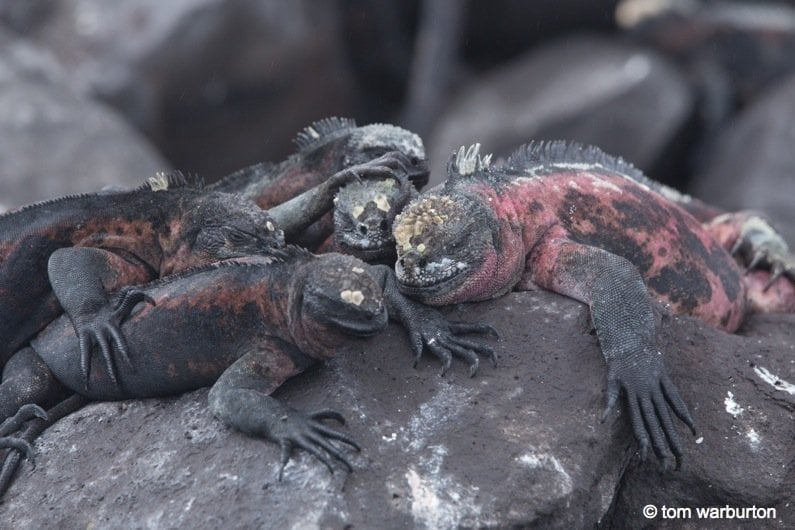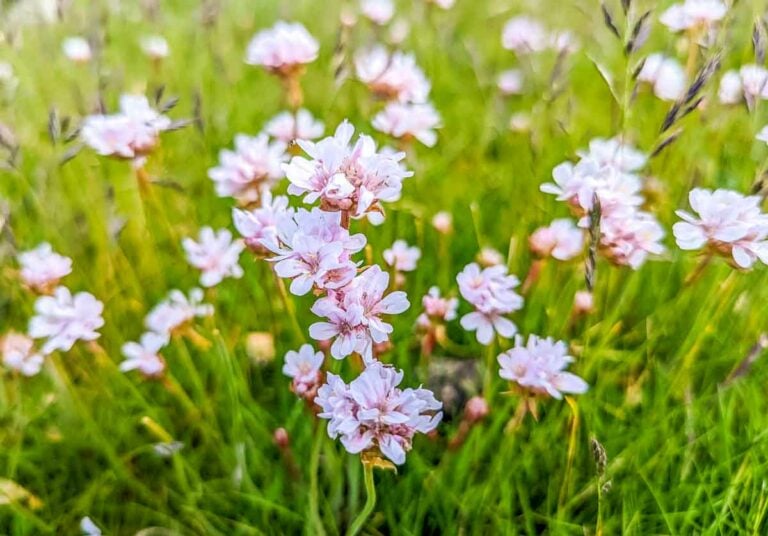When most people think about the Galapagos Islands, Ecuador, they probably know something of its unusual wildlife and maybe that Charles Darwin visited.
Of course the trip to the Galapagos was special for Darwin, but this trip to see the animals and wildlife. in this special and unique place, meant so much to me.

As you’ll see from my bio I trained as an ecologist so I knew something of Galapagos’ wildlife, the importance of the islands to Charles Darwin in the Voyage of the Beagle and his subsequent master piece The Origin of Species.
Those of you that know of Darwin’s trip on the Beagle will know that much of his geology field work was actually undertaken on mainland South America but his five week visit to the Galapagos in 1835 was still pivotal to his thinking in outlining evolution through natural selection.

Why did the Galapagos influence Darwin so much?
Those of you that have read a little of the islands will no doubt know that the different islands of the archipelago have slightly different climates.
Some have freshwater, some do not. Some are high, some are not. Some are affected by the cool southern ocean currents, some less so.

The islands in the west are still volcanic and young (in geological time) the ones in the east, now no longer active, are older (in geological time).
All this diversity of habitat type and the relatively limited number of species of planets and animals that made it to the islands from the mainland have turned this little group of islands into an evolutionary laboratory.
Not many land mammals got to the islands. There are only 6 land mammals in Galapagos: 4 species of small rodents and two species of bats. All but one bat are endemic (found here and only here).

In the absence of mammals, reptiles dominated the islands (until man turned up and introduced himself and many other plants and animals).
Tortoises became the architect species on many islands – the lack of predators, the isolation and the long, long time periods also meant they grew big and diversified – 14 sub-species developed (4 of which are now extinct) – some on different islands, some just on different volcanoes on the same island.

Bird life is equally unusual. The cool water ocean currents from the south (the Humbouldt current) brought penguins. Finches arrived and then diversified into many species and sub-species.

The warmer currents from Central North America (the Panama current) brought sea lions. Once on the islands it is difficult to leave, as the currents would sweep you west into the Pacific where your chances of survival as a land animal are almost zero.

So, once a species arrived it either survived, adapted and evolved or died out – if you die you don’t pass on your genes – so this massive evolutionary pressure drove speciation and many of species of animals and plants on the island are endemic (found only here).

Nowhere else on earth will you find the highest levels of endemism (species found nowhere else on earth) than on the Galapagos Islands.
The majority of all the birds, and virtually every mammal and reptile species here can be found nowhere else on the planet.

The Variety of Islands
In my short trip we visited four islands – San Cristobal, Española, Santa Cruz and Baltra – but even this gave me a sense of the differences.
A small example is that on islands without land iguanas and tortoises, the cacti species don’t need to expend energy growing to an enormous size – they grow low and even have soft spines – where land iguanas and/ or tortoises are present they grow tall and have tough spines.

Walk at Punta Suarez on the Island of Española
A huge highlight whilst on the the Galapagos was the short walk at Punta Suarez on the island of Española. We arrived offshore on the Sunday morning on La Pinta and disembarked for the dry landing on a headland.
We’d been told to expect something special, and how right they were.

It has got to be one of the greatest wildlife walks in the world – Galapagos sea lions, marine iguanas, lava lizards, blue footed boobies, Nazca boobies, nesting waved albatrosses, views to die for and all in about a 4 kilometre circular walk.

All the animals are so lacking in fear of humans that they completely ignore you – you have to watch your step not to tread on a marine iguana or a sea lion pup. Truly awesome.

Particularly worthy of note are the waved albatrosses.

Española is the nesting site for almost the entire global population of these majestic birds (apparently a few pairs have been know to nest on Genovesa Island and Isla de La Plata).

Española is, therefore, pretty much the only place in the world where you can see waved albatrosses nesting. Watching the adults flying by is a truly amazing sight, their 2.2 to 2.5 metre wing span silently gliding them over your head.

Española is also the home of one of the most successful conservation stories over the past few decades. The population of the Española endemic tortoise dropped to 15 individuals – they were rounded up and taken into a captive breeding programme.
The island was then cleared of the introduced goats (a great story in it’s own right), which had wreaked havoc with the endemic vegetation.
Then the young tortoises from the captive breeding project were reintroduced to the island. You can read more of the wider Galapagos tortoise story in The Galapagos: A Natural History by Henry Nicholls. Pirates, whalers and even Darwin himself loved the taste of tortoise meat!

A note on the tourism pressure on the islands and it’s management. I was really impressed with the level of knowledge from the La Pinta guides and their commitment to safe guarding this special environment.
As I understand it the National Park licences tourist operators and guides. Each visitor site has a limited number of visits, and groups can only visit each site with the trained guides.

The tourist operators are on a strict rotation and so the La Pinta only visits each site once a fortnight – so if you have a particular site or island you want to visit you should check the timetables carefully.
If you step off the path the guides will be quick to point it out and ask you to get back on. 97% of the land area of Galapagos is National Park! The vast majority of the land area is not visited except if you have a licence to undertake research of the national park. And even those are very limited.
Marine Iguanas – Darwin’s Imps of Darkness
One of the highlights of the walk on Española, and the other island of the Galapagos, is seeing the marine iguana (Amblyrhychus critatus).

These reptiles are one of the strangest animals on the planet. A ‘cold bloodied’ animal that swims in the sea, has webbed feet, a broad tail (to assist swimming) and only eats seaweed – they are completely bizarre!

It is well reported that Darwin thought them weird as well. When Darwin first saw them on San Cristobal (here on the same beach as some of these photographs were taken) he described them as follows:
The black lava rocks on the beach are frequented by large (2-3 ft) most disgusting, clumsy lizards.
Charles Darwin
Imps of Darkness.

Darwin then went on to preform a type of experiment on one individual. He threw it into the sea – it crawled back onto land. Darwin threw it back in the sea – it crawled back. Every time he threw it in – it crawled back. He eventually concluded that:
This reptile has no enemy whatever on shore, whereas at sea it must often fall prey to the numerous sharks.
Charles Darwin

Experts think that while this might be partly right, it is more likely that the particular iguana Darwin was throwing about probably hadn’t warmed up enough to survive a prolonged exposure to the relatively cool sea.
They will spend long periods basking in the morning in order to warn up enough to then be able to spend relatively short periods at sea so as to be able to eat the seaweed they need to survive.
The iguanas have specific bacteria in their stomachs, which aids them digest to algae.

When you see the iguanas basking on the black rocks, the vast pacific crashing against the cliffs of the southern Española with nothing between them and Antarctica – well it’s easy to dream that you are back in the age of dinosaurs when reptiles ruled the earth. Truly wonderful.
The Galapagos Sea Lions
The Galapagos Sea Lion is the most numerous mammal in the whole of the archipelago. You may have thought you had seen sea lions before but again, here on the Galapagos, being separated from other land masses, they have evolved differently.

They are not true seals as we know them in other parts of the world. The Galapagos Sea Lion can pull its hind flipper under its pelvis. Plus they do not have the long finger type claws.
The easiest way to spot a male is that they are 4 times as heavy as a female plus they have a distinctive lump on their forehead.

I saw so many of them lazing on the gorgeous beaches. That being said they hunt well. Diving up to 600 m underwater and can hold their breath doing this for 10 minutes. Their food is primarily Sardines.

Respecting The Islands
Although the islands are now well protected – and pirates & whalers (or Darwin) no longer visit the islands to collect tortoises – they are still under pressure and if you do visit please, please respect the rules and regulations – don’t be the one to introduce some plant or animal that creates more havoc.

And do as the guides ask – it’s a bit weird being quite forcefully told what to do and what not to do when your on holiday – but please do as they say – it’s very, very important and crucial to the survival of these remarkable islands.

If you wish to have this experience, you will never ever regret it!









Ah..this is just so great! Loving your pictures. I’ll be there in 1 month (booked a 6 day cruise – or was it 7?).
Thinking about visiting the island again (just like u) i am close to peeing myself. haha. It is just such a special place. Wish I could spend a month there – but I’d probably have to quit my job then *sigh*
Really great photos Tom, I especially love the sea lions on the beach 🙂
Idiot!
At least you got another opportunity – and how lucky for the rest of us that you did.
Great post – lovely photography – thank you